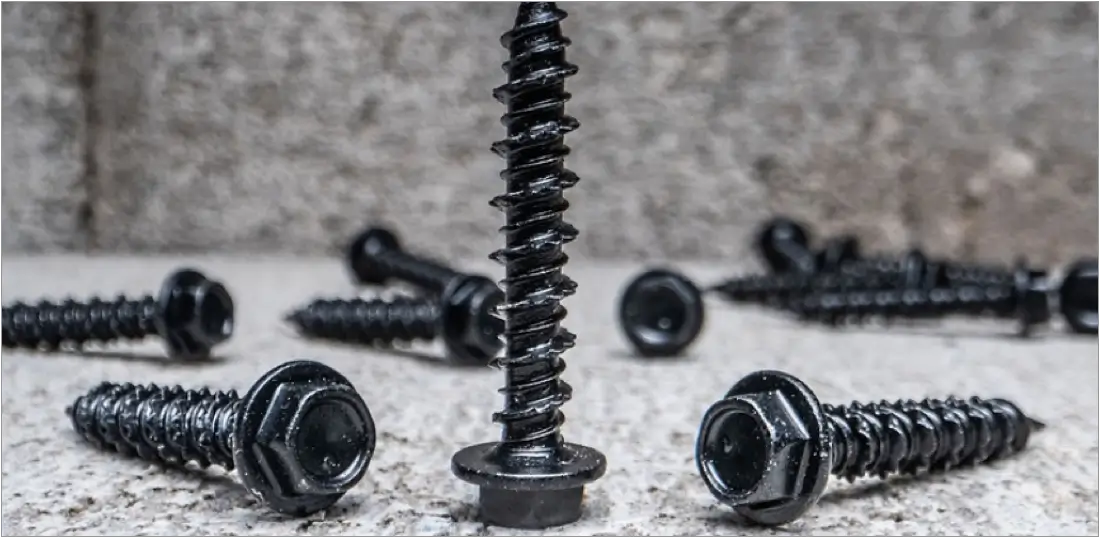Anchoring in Concrete

Anchoring in Concrete
When building structures that must withstand the toughest elements, concrete is the go-to material because it is versatile, durable, and economical. Concrete can be easily shaped and colored, and it is one of the safest building materials available.
Concrete construction has been common practice since the Roman Empire. As a testament to concrete’s strength, the Colosseum still stands today. When working with something so strong and durable, it is equally important that craftsmen be equipped with the best tools to make their work as effortless, efficient, and safe as possible.
That’s why we took a fresh look at how concrete anchors are designed, how they interact with different materials, and how they can last longer while providing a secure connection and a more appealing look.
It started with the tip
Traditional concrete screw anchors utilize a chisel point because the anchor applications were direct to concrete and masonry only. Power Pro Concrete Screw Anchors feature a fully threaded tip. This allows the screw to be used in additional applications such as concrete forming by having the ability to drive faster and straighter into wood-to-wood applications without pre-drilling.
The Threads
The wide serrated threads and mid-crossband threads offer a cleaner and faster cut while providing superior pullout and shear load strength. Additionally, it helps remove the debris from the anchoring hole, so the screw sinks directly into the cement.
Hex or Flat Heads
Available in hex washer head and flat head with star drive. Hex heads are ideal for applications that require additional holding power and faster drive times such as securing metal to concrete. Flat heads offer a cleaner look as they countersink to remain flush with the surface and the star drive offers additional contact points to reduce the chance of stripping. The flat head also incorporates under head micro nibs that clear out debris so that the fastener seats more securely.